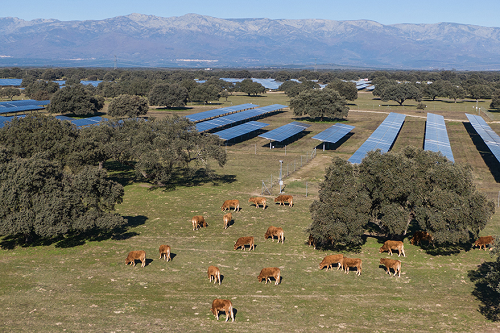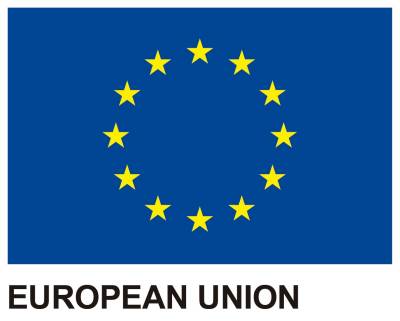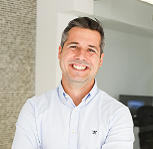The recent acquisition of the Spanish company Enerfín for 1.5 billion euros was Statkraft's largest transaction in its history.
Statkraft came into being 130 years ago in Norway and was active in generating hydroelectric power at sites with waterfalls. Wholly owned by the Norwegian government, the company has expanded internationally in recent years – it has a presence in over 20 countries – and generates electricity through various energy sources – mainly hydropower, solar and wind. In 2018, it started its activity in Spain, where it aims to become one of the leading renewable energy producers by 2030.
Statkraft currently has around 1.4 GW of installed and operating capacity in solar and wind technologies. Its development pipeline totals 1.6 GW and includes solar energy, wind and hybrid projects, as well as those relating to energy storage.
It is also a benchmark for long-term power purchase agreements (PPAs), both in Spain and Europe. It offers customised solutions to its customers, which are industries and large consumers. Statkraft closed the 2024 financial year with a total of 85 contracts in Spain, which represents a committed volume of energy between purchases and sales of over 50 terawatt hours. It has a portfolio in this business segment of 2.1 GW of installed solar and wind power capacity.

With what objective was the Spanish subsidiary created and how has it evolved?
The company started its activity in Spain in 2018, with a very small team that was mainly dedicated to market activities relating to power purchase and sale contracts. In 2020, Statkraft subsequently acquired the UK-based Solar Century, thereby increasing its presence with a solar-focused portfolio. After several years of organic growth, we completed the acquisition of the Spanish company Enerfín in 2024, consolidating our commitment to the Spanish market. We have positioned ourselves in the top 10 for wind energy, and we have an ambitious goal to further increase our presence.
Purchasing Enerfín gave you muscle in the Spanish market. What figures were involved in this transaction?
The acquisition of Enerfín, which amounted to 1.5 billion euros, was in fact one of the major transactions carried out in recent years in the Spanish energy industry. For us, it was a milestone in our history and has made us a major player in the market. We now have a balanced portfolio of wind and solar projects, totalling 1.4 GW of installed capacity, between our own assets and those operated for third parties, and with the option of hybridisation and repowering for a further 300 MW. Thanks to this transaction, we have not only incorporated renewable facilities in operation and under development, but we have also integrated a team of professionals with whom we now have nearly 300 employees in Spain.
Do you plan to grow with more purchases in Spain, or only organically?
We do not plan to make any further purchases of this kind for the time being. It is worth noting that the Enerfín transaction was the largest in the Statkraft Group's history. However, we are always keen to explore and assess any opportunities that may arise in the market.
How important is Spain for the company's strategy?
Spain is one of the priority markets where the Statkraft Group has decided to continue to invest following its strategy review in 2024. The reasons to invest in this market include: the abundance of natural resources, sun and wind, and, of course, the existence of a professional and quality industry that is present throughout the industry's value chain, something which allows us to find partners with whom we can develop projects, as well as regulation that supports the energy transition. Although there are still challenges in the process for obtaining permits, in terms of access to support mechanisms for less mature technologies and advancing the transposition of European directives (such as RED III, the EU renewable energy directive 2023/2413), we believe that the current Government of Spain has clear objectives and supports the necessary change of model.
You have just opened new offices in Madrid. Is it another step towards achieving further growth?
The opening of our new offices in Madrid, in addition to our existing offices in Valencia, is a direct consequence of us having integrated Enerfín into Statkraft. Our team has grown by around 90 people, almost all of them based in Madrid, so it was necessary for us to have access to more working space. We now have a workplace in the capital that suits the kind of organisation we have become.
You are now starting to focus on hybridisation and battery storage. What is the reason for this move?
Energy storage is the next challenge for the industry. We need to be able to ensure that all renewable energy under development can be safely integrated into the electricity system and match supply with demand. The installation of batteries is essential for this. We envisage hybridising wind and solar power assets with batteries. We have six hybridisation projects in the pipeline at the moment,, totalling 72.6 MWp, through projects in Navarre, Galicia, Andalusia and Extremadura.
How have sustainability criteria evolved when developing renewable projects?
Sustainability criteria are increasingly relevant for designing renewable projects. In Spain, the procedure is guaranteed, requiring exhaustive monitoring and studies to ensure that the installation can be developed, while minimising the impact on the region and the environment. For us, this is excellent news, as our commitment responds to a triple prism of sustainability: economic, social and environmental. We know that the energy transition will only be successful if we get everyone on board and if the benefits are shared by all. In this regard, it should be noted that eight of the 10 solar plants we operate in Andalusia have been awarded the UNEF Seals of Excellence in sustainability, something which guarantees that the installations have been developed in accordance with strict sustainability criteria. At the end of 2024, we did in addition receive the European Union's Transit award for the four plants we operate in Cadiz, something which highlights the social measures deployed during their development. These consisted of training and employment schemes, the creation of a scholarship programme for young students and promotion of the circular economy.
Photos: Statkraft



